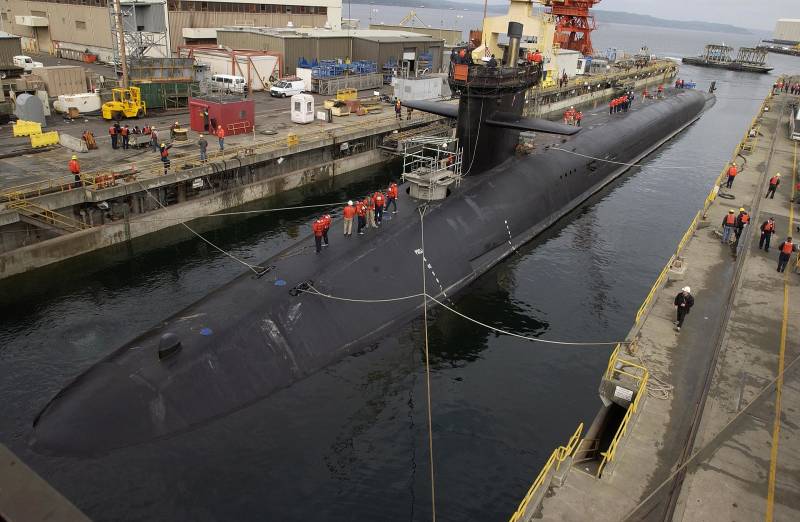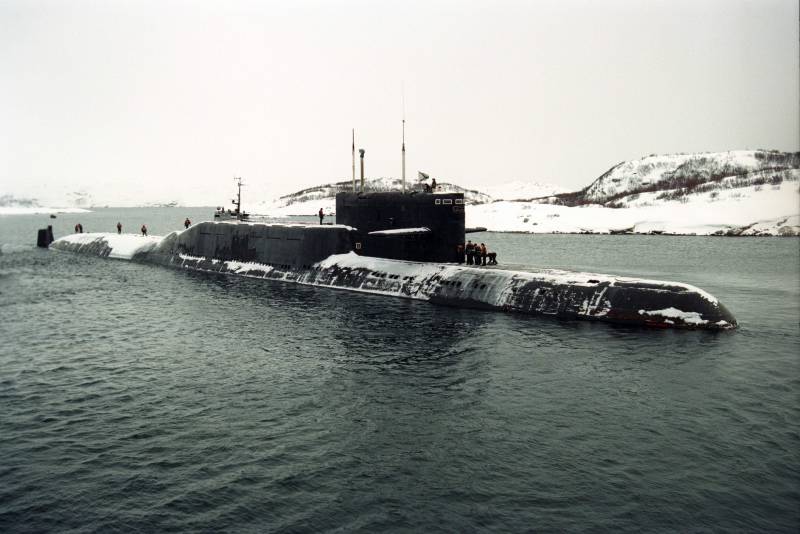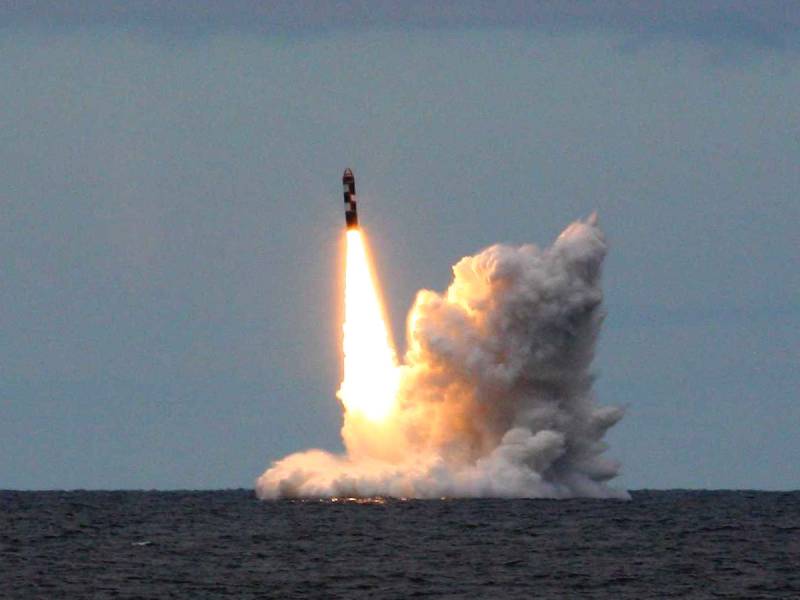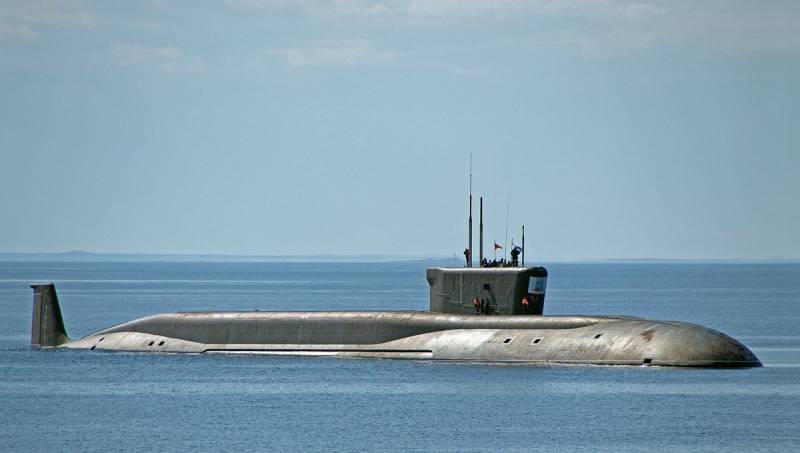Instead of a thousand warheads: Will the Bulava save Russia?
About the "new Cold War" did not write, probably only very lazy. In fact, it is naive to believe that Russia and the United States will be measured by their nuclear arsenals, as it was half a century ago. The capabilities of countries are fundamentally different: this is clearly seen from the military budgets. According to the Stockholm World Research Institute, for the 2017 year the US defense budget amounted to 610 billion dollars, while Russia - 66 billion. This difference, in general, affects the tactical potential of the armed forces more than the strategic one. Nevertheless, the American nuclear shield, as a whole, seems to be more modern and, more importantly, more protected.
Recall that the basis of the US nuclear triad are solid propellant ballistic missile submarines (SLBMs) UGM-133A Trident II (D5). They are based on fourteen strategic Ohio-type submarines. Four more boats were converted by Americans under the carriers of cruise missiles. Each of the Ohio strategic boats carries 24 ballistic missiles: no other submarine in the world can boast such an impressive arsenal, and no other SLBMs have as many features as the Trident II (D5). However, the Americans have their own difficulties. The Ohio itself is far from a third-generation submarine (now, we recall, both the United States and Russia are already in full exploitation of the fourth). Ideally, these boats need to be changed, but so far there is nothing trivial. The project "Columbia" stalled.
In principle, for a guaranteed retaliatory strike, Russia would have enough land-based nuclear and mine-based nuclear complexes. However, with all the advantages of existing systems, such systems are more vulnerable than strategic submarines. In part, this is the reason for the return to the now canceled “nuclear train”, which received the designation “Barguzin”, which, by the way, also had conceptual flaws related to vulnerability. In general, there is nothing more tempting than having an invisible and silent nuclear arsenal in a nuclear triad, which, moreover, will be able to change its location.
Old boats, old difficulties
The problem for Russia lies in the fact that the existing submarines of the second and third generations of the 667BDRM Dolphin project are morally obsolete. The fact that China built its 094 “Jin” boats with an eye to the Soviet shipbuilding school says nothing. Or rather, he says, but only that the Celestial Empire did not have any other technologies (say, American). "Dolphin" - not the lowest noise submarine. It is believed that the old American boat of the Los Angeles type discovers a submarine of the 667BDRM project in the Barents Sea at a distance of up to 30 kilometers. It must be assumed that for Virginia and Sivulf this indicator will be even better.
This is not the only problem. Each submarine of the 667BDRM project carries sixteen R-29RMU2 “Sineva” missiles. For all their advantages, the use of liquid rockets is fraught with a number of risks, in comparison with solid-fuel missiles, such as the already mentioned Trident II (D5). For maintenance of liquid-fuel rockets need a lot of equipment that increases the noise of the submarine. And working with toxic components of fuel increases the risk of an accident, which can turn into a tragedy of almost global proportions. Recall that it was the depressurization of the missile tanks that led to the death of the K-219 submarine.
Salvation - in the Bulava.
In this sense, the solid-fuel Bulava, which, as we know, is inferior to the American Trident in terms of the airborne mass and has a number of technical problems, is still seen as a much better option than old rockets, even if they have been modernized. The Bulava has a range of up to 11 thousands of kilometers, a starting mass of 36,8 tons, and a drop mass of up to 1,15 tons. The rocket is capable of carrying six warheads of individual guidance. For comparison, the “Trident II (D5)” thrown weight is 2800 kg.
Why such a big difference in performance? As stated in his time by the Chief Designer of Topol and Bulava, Yuri Solomonov, a decrease in the payload of the rocket is associated with an increase in its survivability, including a low active flight segment, when the rocket propulsion engine is working and it can be well observed and destroyed in the early stage. “In Topol-M, and in Bulava, the active site is smaller in 3 - 4 times compared to domestic missiles, and compared to American, French, and Chinese missiles - in 1,5 — 2 times,” Solomonov said.
There is, however, a more trivial reason - the banal lack of funds for a more powerful rocket. It was not for nothing that in the Soviet years, Borei wanted to equip with a special version of the solid-fuel P-39, which had a comparable mass to the Trident and the total mass of the combat units, far exceeding those of the Bulava.
Recall, by the way, that each new Borey submarine must carry sixteen P-30 Bulava missiles. In total, there are three boats in service now, and while maintaining the pace of construction, they will be a completely equivalent replacement for the “Dolphins” and also the heavy “Sharks” of the 941 project, which de facto have already sunk into oblivion (only one such boat is currently in operation converted to "Bulava").
But the main problem of the “Bulava” is considered not a small mass to be thrown or a relatively small destructive effect, but a high percentage of unsuccessful launches. In total, 2005 carried out over 30 test launches, of which seven were considered unsuccessful, although many experts focused on many partially successful launches. However, even with the novelty of a high percentage of failures can not be called something unique. Thus, the aforementioned P-39 of the first 17 launches failed more than half, but this did not put its adoption, nor, in general, normal operation. If it were not for the collapse of the USSR, the rocket could theoretically serve for more than one decade. A "Mace", most likely, would not have appeared.
If you try to summarize what has been said, the plans to urgently look for a replacement for the P-30 look too harsh and unnecessary. Recall that in June 2018 of the year it was reported that the missile was still adopted. And in May of this year, the Ministry of Defense of the Russian Federation showed unique shots of preparation for the launch and simultaneous launch of four P-30 “Bulava” ballistic missiles. It is unlikely that one or the other would be possible if the rocket was “raw”, inefficient or so unsuccessful purely conceptually that it could not be talked about its use.
Obviously, the Bulava will become the basis of the naval component of the Russian nuclear triad, at least in the coming decades. At the same time, various “childhood diseases” will be gradually eliminated, inherent, in principle, to any new technology, especially so complex. At the same time, the ground component of the nuclear triad of the Russian Federation will remain its basis in the foreseeable future. That only cost efforts aimed at the projects "Petrel" and "Avangard".




Information